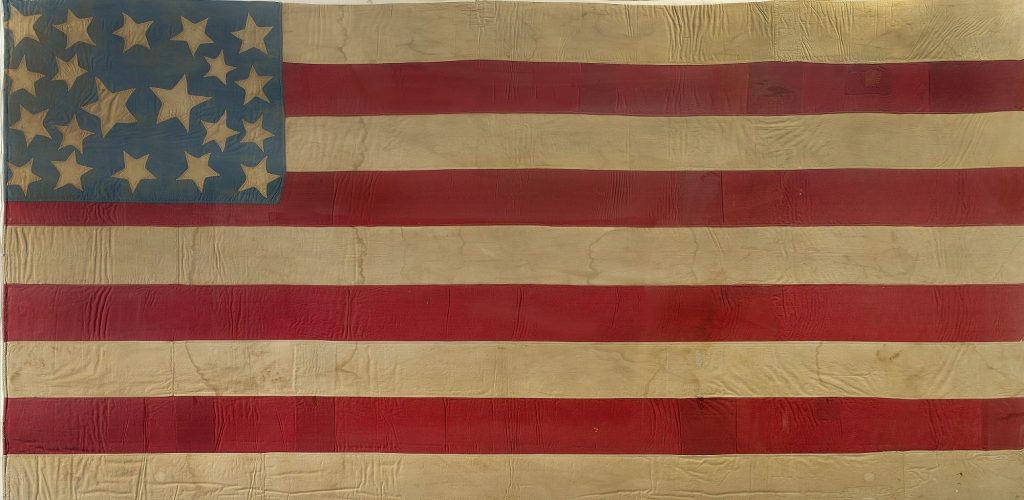Background
In the 1800s, middle- and upper-class white women were expected to follow a set of social and cultural rules that historians now call the Cult of Domesticity. Under these rules, women were expected to submit to the opinions of their husbands and fathers. They were not supposed to express their political beliefs publicly. Any woman who did so risked her reputation as a wife, mother, and daughter and her place in society. Some women who ignored these rules experienced violent responses (see Life Story: The Grimké Sisters).
But this did not stop women from expressing themselves in the antebellum period. They found other methods that were considered appropriate for their gender. One way women could more safely express their political opinions to the larger world was through the creation of crafts that carried political messages tied to issues of morality. Women abolitionists created hundreds of items that supported the abolition of slavery in the United States. Many of these items were sold to raise funds for the political and legal branches of the movement that women were largely barred from participating in.
About the Artifacts
Given that women did the vast majority of sewing in the 1800s, it is very likely that a woman made this abolitionist flag. It was created in Andover, Ohio, in 1859. Andover was an abolitionist hot spot and home to one of John Brown’s sons. The flag has only 20 stars and 9 stripes. The creator left out every state and original colony that continued to uphold the practice of slavery. This flag is evidence that some abolitionists may have supported dividing the United States as a response to the sectional crisis.
Black dolls, some representing famous Black activists, were a very popular craft made by abolitionist women. The dolls were sold at fairs to raise money for abolitionist groups and causes. Some were bought by families who wanted to raise their children with abolitionist principles. These dolls were made by American Quaker abolitionists. The Quakers were a powerful force in the abolitionist movement.
Vocabulary
- abolitionist: A person or group that wanted to end the practice of slavery.
- antebellum: Before the American Civil War.
- Cult of Domesticity: A term historians use for the rules for middle-class female behavior that emerged in the first half of the 1800s.
- John Brown: An abolitionist who tried to start an armed slave uprising in 1859.
- Quaker: A Christian religious group founded in the 1650s. Quakers were early advocates for ending slavery in the United States.
- sectional crisis: A term historians use to describe the period in the 1850s when the divisions between free and slaveholding states became more pronounced.
Discussion Questions
- Why did women feel pressured to keep their activism to acceptable women’s work?
- What does this abolitionist flag reveal about the tensions in the United States in 1859?
- What values are represented by the creation of Black dolls? Is there anything problematic about selling representations of Black people to protest slavery?
Suggested Activities
- APUSH Connection: 5.5 Sectional Conflict: Regional Differences
- These artifacts can be used to illustrate how some women used domestic skill to support the abolition of slavery.
- Include the abolitionist flag in any lesson about the insurrectionist politics of John Brown during the sectional crisis.
- Compare these items with the principles outlined in the Salem Female Anti-Slavery Society constitution. How do these items uphold those ideals? What do these sources teach us about abolitionist tactics and beliefs in the antebellum period?
- For a larger lesson about how women participated in the antebellum debate over slavery, combine this resource with the life story of Angelina and Sarah Grimké and Pro- and Anti-Slavery Literature for Children.
- To learn about how middle- and upper-class white women continued their socially approved activism during the American Civil War, explore Sanitary Fairs, Women’s War Production, and Life Story: Elizabeth Blackwell. To learn about women who defied social convention during the war, read Women Soldiers, Changing the Rules of War, and Life Story: Loreta Janeta Velázquez.
Themes
ACTIVISM AND SOCIAL CHANGE; AMERICAN CULTURE
New-York Historical Society Curriculum Library Connections
- For more information about the Culture of Domesticity, see Saving Washington.








